Hannah Braime's Blog, page 17
July 21, 2016
99: Making the Most out of Life’s Plot Twists with Jake Desyllas
This week I’m sharing a conversation I recorded a few weeks ago with my husband, Jake, about a big development in our lives, several changes that have happened as a result, and making the most out of life’s plot twists. Can you guess what it is? :)
Episode: Making the Most out of Life’s Plot Twists with Jake Desyllas
Topics we cover include:
The big new development in our lives
Going with the flow when your best laid plans end up with unexpected plot twists
Making big decisions when you have limited information
Sticking to your values and priorities in the face of uncertainty and change (without getting too attached to particular labels)
…and much more.
Useful Links
The Voluntary Life – Jake’s podcast
Say Hello
Jake
Facebook: facebook.com/thevoluntarylife
Twitter: @jakedesyllas
Website: thevoluntarylife.com
Hannah
Pinterest: pinterest.com/hannahbraime
Facebook: facebook.com/becomingwhoyouare
Website: becomingwhoyouare.net
Get a Free Audiobook from Audible
This podcast is brought to you by Audible.com. If you enjoy Becoming Who You Are, you can support the show by registering for a free 30-day trial using the link below. As part of your trial, you’ll get a free audiobook and can cancel any time.
Subscribe to the Podcast
Intro and outro: Stephanie Murphy
Image: Pineapple via Unsplash
The post 99: Making the Most out of Life’s Plot Twists with Jake Desyllas appeared first on Becoming Who You Are.










July 18, 2016
9 Books That Will Kickstart Your Personal Growth
Books have been my gateway to personal growth. They were how I became interested in psychology, self-reflection and self-awareness and have continued to be the number one way I educate myself. I find it amazing that, within each book, we can access new ideas, perspectives and information that plant seeds for future growth. Of course, reading alone isn’t enough; we need to actually go out and do something with our insights too :) Here are a few of my favourite books that will kickstart your personal growth:
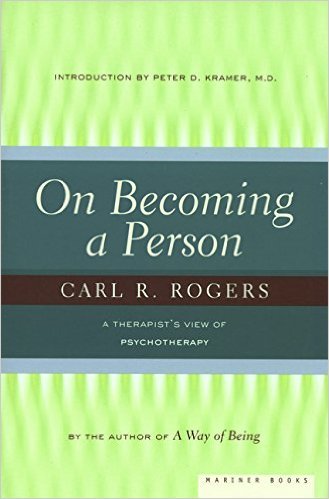 On Becoming a Person by Carl Rogers
On Becoming a Person by Carl RogersThis book is aimed at psychotherapists, counsellors and social workers but is a must-read for anyone who wants to develop a more understanding and compassionate relationship with themselves. Carl Rogers is the grandfather of client-centred therapy and shares many of the key ideas behind humanistic psychology in this series of essays. Far from being a series of stuffy abstract texts, this collection is warm, encouraging and provides insight after insight into what makes us who we are, how to understand ourselves better and embrace our capacity for wholeness.
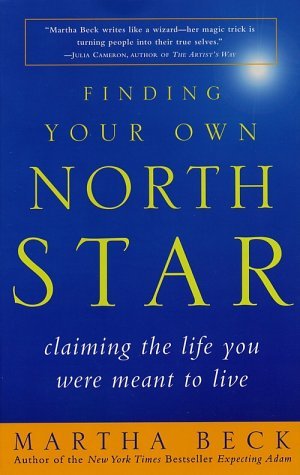 Finding Your Own North Star by Martha Beck
Finding Your Own North Star by Martha Beck Martha Beck is arguably one of the most famous life coaches in the world and this book is her step-by-step guide to connecting with our values and desires in the face of external pressure to conform. Throughout the book, she offers a series of exercises and anecdotes designed to shed light on two important sides of our selves: our “essential selves” (the part of us that lives in our emotions and desires) and our “social selves” (the part of us that is attached to what other people think). This is a valuable read for anyone experiencing a period of change or transition in their lives.
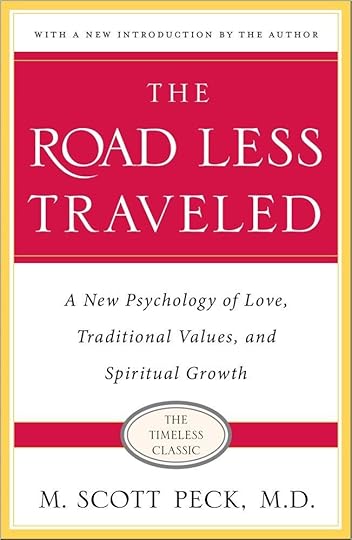 The Road Less Travelled by M. Scott Peck
The Road Less Travelled by M. Scott PeckThe Road Less Travelled is an exploration into the major areas of human existence that make life fulfilling, such as discipline, self-responsibility, truth, love, and spiritual growth. Not being religious, the last section was a little mystical for my tastes, but it’s still well worth reading and easy to see why this has become one of the classic self-help books from the last few decades. Throughout the book, M. Scott Peck combines stories and case studies, insights from his practice as a psychotherapist and philosophical discussion on what it means to be human. The opening passage is one of my favourite:
“Life is difficult.
This is a great truth, one of the greatest truths. It is a great truth because once we truly see this truth, we transcend it. Once we truly know that life is difficult-once we truly understand and accept it-then life is no longer difficult. Because once it is accepted, the fact that life is difficult no longer matters.”
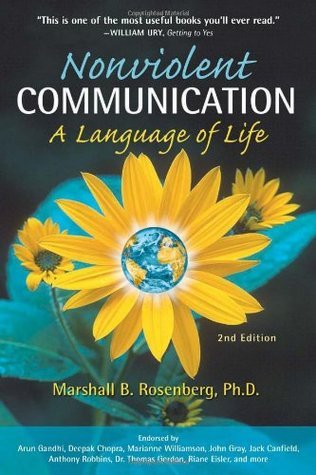 Non-Violent Communication by Marshall Rosenberg
Non-Violent Communication by Marshall RosenbergNon-Violent Communication is a handbook for communicating with greater empathy and compassion, both with ourselves and with others. Through his writing, Marshall Rosenberg encourages readers to related to our own experience of the world, and others, in terms of feelings and needs. The principles in the book are relevant to conversations and negotiations in our personal and professional lives and it provides a framework and vocabulary we can use to relate to people on a more constructive and compassionate level. Personally, I’ve found sticking rigidly to the NVC lingo can sound artificial, even condescending, but the principles are still invaluable for showing up with greater empathy in our relationships.
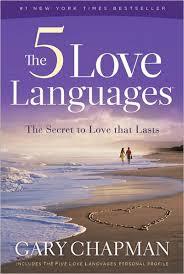 The 5 Love Languages by Gary Chapman
The 5 Love Languages by Gary ChapmanThe 5 Love Languages is a framework developed by Dr. Gary Chapman, a relationship counsellor and pastor. In his eponymous book, he outlines the different love languages (words of affirmation, quality time, receiving gifts, acts of service and physical touch) and explains how to identify both our love language and our partner’s. He also shares how we can use our awareness of these love languages to better meet our and our partner’s needs in our relationship and create love that lasts. The concept of love languages is simple but can have a big impact on our day-to-day experience of our relationships.
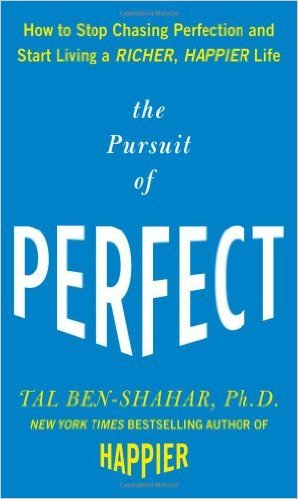 The Pursuit of Perfect by Tal Ben-Shahar
The Pursuit of Perfect by Tal Ben-ShaharIn The Pursuit of Perfect, Tal Ben-Shahar explains how we can shift from being perfectionists to what he calls “optimalists,” people who aren’t afraid to challenge themselves and strive for greatness but do so from a place of self-confidence and already feeling enough. The book contains useful exercises that encourage us to reflect on our own thinking and approach to life and, if you suspect you might struggle with perfectionism, there are bound to be several enlightening “a-ha” moments as you read.
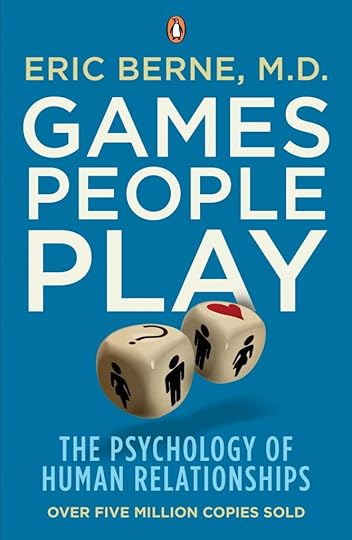 Games People Play by Eric Berne
Games People Play by Eric BerneGames People Play is a useful exploration of various dynamics that can play out in our relationships, and how to bring social interactions back to a more transparent and authentic level. Author Eric Berne is the creator of Transactional Analysis, which theorises our social interactions are based on three ego states: parent, adult and child. These ego states combine in social situations to form a number of what he describes as “games.” This book is a fascinating insight into some of the hidden motivations behind interactions we’re likely to recognise from our own lives.
And finally…
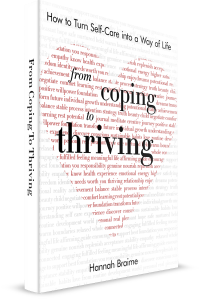 From Coping to Thriving: How to Turn Self-Care Into a Way of Life
From Coping to Thriving: How to Turn Self-Care Into a Way of Life Self-care is a necessary part of being alive, not something we resort to when we’re at our most burned out, vulnerable, and desperate. It’s is “the right and responsibility to take care of your physical, emotional and spiritual well-being.” (Pauline Salvucci) From Coping to Thriving will show you exactly how to do just that.
This is a comprehensive guide to making self-care part of your everyday life. With a balance between practical suggestions, coaching-style questions and psychological groundwork, From Coping to Thriving is designed to give you the self-knowledge and awareness you need to start making self-care an integral part of your life, instead of something that lives at the bottom of your priorities list. Not only does the book contain hundreds of useful tips and ideas to get you going with a regular self-care practice, it will also take you deeper into related topics like habit-formation, coping strategies, dealing with resistance to self-care and more.
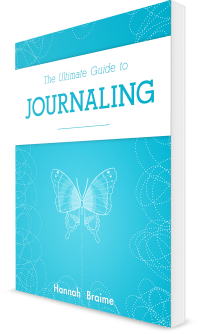 The Ultimate Guide to Journaling
The Ultimate Guide to JournalingIn The Ultimate Guide to Journaling, you’ll find the tips, inspiration, and prompts you need to start and maintain a journaling practice for DIY self-discovery.
This clear and concise handbook shares everything you need to know to deepen your relationship with yourself using this powerful personal development tool. Covering foundational topics like how to journal, which tools to use, and how to make it a regular habit, as well as over 30 different journaling techniques and many more prompts, The Ultimate Guide to Journaling will help you keep your practice flowing for years to come.
Through a combination of handwritten, digital and art journaling suggestions, you’ll learn how to tap into your internal resources, learn more about what makes you who you are, discover how to negotiate with the different parts of yourself, and create a safe space to explore your inner world.
What are your must-read books that will kickstart your personal growth? Leave a comment and share your thoughts.
Further reading: 10 powerful books on self-care that will enrich your life & 7 must-read books that will help you better your relationships
Image: Annie Spratt
The post 9 Books That Will Kickstart Your Personal Growth appeared first on Becoming Who You Are.









July 11, 2016
How to Make Friends with Your Shadow Side
“To confront a person with his shadow is to show him his own light. Once one has experienced a few times what it is like to stand judgingly between the opposites, one begins to understand what is meant by the self. Anyone who perceives his shadow and his light simultaneously sees himself from two sides and thus gets in the middle.” – Carl Jung
Whether we like it or not, we all have a shadow side. For every choice we make, there is the choice we don’t make. Acknowledging and integrating my own shadow side is very much a work in progress, but it’s been an integral part of becoming who I am.
Much of our shadow side stems from childhood, the rules for living we learned growing up and the aspects of ourselves we’ve repressed or disowned as a result. A common example of this is the baggage that comes with traditional gender conditioning. Boys don’t cry (and so tenderness and vulnerability become a shadow side). Girls don’t get angry (and therefore anger becomes a shadow side). The shadow is our “unlived life” the parts of ourselves that don’t get an airing. Usually, these things have been relegated to the dark for a good reason. They frighten us, we feel threatened by them, they provoke feelings of shame or disgust, and/or they feel unacceptable.
Just because they don’t get an airing, however, doesn’t mean they disappear. And, because they don’t get an airing, they tend to emerge in unconscious ways. Taking one example above, an inability to express healthy anger might manifest as depression or outbursts of uncontrollable rage. Whether we accept our anger or not, it’s there (as are all aspects of our shadow side). Because it’s unconscious, we lose control over how we express it.
You’ve probably heard the saying that the things we find most annoying about others are things we struggle to own in ourselves. This is another example of the shadow side. If we get ticked off when someone expresses a judgement, we might struggle to acknowledge and own our own capacity to be judgemental. If we notice ourselves labelling someone as “bossy” or “bolshy,” it could be a sign we’re struggle to own our own desire to be more assertive.
How to make friends with your shadow side
Jung explains we can integrate our shadow side by bringing the dark into the light and making the unconscious conscious. Everyone has a shadow side (even—especially—if you’re reading this thinking “Who, me?”). We do ourselves a huge favour when we can acknowledge those undesirable aspects of ourselves are part of what makes us human.
The shadow is often talked about in the negative, but it’s not just about dredging up our deepest, darkest, weirdest bits. Alongside the less shiny-shiny aspects of ourselves, we can also uncover the “golden shadow.” This can show up as a higher calling, unexplored potential or submerged greatness. It can manifest as things we admire or envy in others.
Start in a private, safe environment
Whether we’re exploring the shadow, the golden shadow or an as-yet unknown combination of both, the best place to start is in a private, safe environment, for example in your personal journal or in partnership with a counsellor.
Explore the stories and meanings you attach to your shadow side
Our shadow side might feel uncomfortable, but that doesn’t mean it’s “bad.” Remember, we can learn a lot from it about outdated beliefs we’re holding on to, about needs and desires we haven’t yet honoured, and about untapped potential. Our shadow side becomes our shadow side because we’ve attached negative beliefs and stories to certain aspects of ourselves. Identifying and unravelling these stories is an important step towards being able to accept all parts of ourselves
Remember that shame thrives in secrecy
The more we can acknowledge and own the different aspects of our shadow sides, the more we can face any residue of shame that might come with them. In her book The Gifts of Imperfection, Brené Brown talks about how shame loves secrecy and therefore the antidote to shame is connection and sharing. If we can own our story and share it with someone who has earned the right to hear it, shame cannot thrive.
Integrating our shadow side doesn’t mean sharing it all with everyone. Sharing with the right person or people is important as not everyone will handle our shame experience well. A negative or unempathic response can do more harm than good and only contribute to the shame spiral. Find the right person or people and sharing, however, can be a cathartic, healing experience.
The prospect of exploring and befriending our shadow side can feel daunting. When we start out, we’re faced with uncertainty that, for some people, can feel overwhelming. I hope this post has also shown how within the darkness we can find strong sources of light, not to mention the possibility of living whole-heartedly, accepting ourselves for everything and all we are.
What have you found to be most helpful for making friends with your shadow side? Leave a comment and share your thoughts.
Further reading: 12 quotes for a better relationship with yourself & forgotten feelings
The post How to Make Friends with Your Shadow Side appeared first on Becoming Who You Are.









July 7, 2016
Why Meditation Isn’t the Answer to Overthinking
This is a guest post by Samy Felice.
You’ve been meditating daily for the last week, month, or maybe even years. In moments it’s blissful, otherwise it can be frustrating, at least at first. Thoughts come and go – but you’re now aware of your thoughts and begin to sense a deeper dimension of consciousness. But not too long afterwards your meditation, your mind goes back to its habitual patterns of thinking, churning negative thoughts in different periods of the day. And you can easily become tangled in them and lose your state of awareness.
Is there a way to make this happen less frequently, so that you can experience your life with greater presence?
One of the reasons why we overthink and what we can do about it
Meditating will bring awareness into your being and thoughts. And done consistently, it will allow you to begin to understand how your mind works. But it won’t solve your patterns of overthinking. There’s an issue that lies behind most of overthinking that isn’t tied to meditation.
It’s tied to the way we breathe.
When we only breathe from the neck up, we’re likelier to stay stuck in your head. When you don’t feel your belly rising with you; an act of letting go if you will, it’s easier to get lost in your thoughts. If we were to change the way we breathe, we would change every single living moment of our lives into something far deeper. Simple reminders to deepen our breathing can help. But for many of us, our muscles around our chest, neck and belly are so tight that this alone won’t work.
You’ve been conditioned to not breathe properly
So many things in our society, seem to be created to perpetuate a castrated way of breathing. From the ties we wear to the belts we tighten every Monday-Friday, to the monitor displays that force us to bend our necks down, most of us aren’t breathing deeply! But that’s just part of the reason why you’re not mindful.
You many not be breathing properly because:
You sit down too much
You have poor air quality in the house
You clench your jaw often
You exhale too soon
You do far too many pushing exercises and not enough pulling movements at the gym
You pay too much attention to your breathing (it’s something you’re meant to let happen)
You have an allergy you haven’t addressed
You’ve built the habit
Begin a daily breathing practice, expressing more of your thoughts, and eating healthier
The deeper we breathe, the more of life we’re accepting.
Yet you have all these ideas swirling in your skull, and maybe what you need is more good conversations? Social isolation can quickly make us feel like we’re rattling our cage. And even the most meditative practices won’t stop our overthinking if we’re not connecting with other people. Another good way to express our thoughts is to begin writing a morning journal.
In short, speak with people you can trust often, and write down your thoughts. These practices can give you a sense of relief that allows you to let go and breathe more deeply. Otherwise, maybe the foods you’re eating are making you feel sluggish and thus impacting your breathing. Or they’re making you feel too anxious and causing you to breathe rapidly.
When you can master the art of subconsciously breathing properly, even when you’re in the midst of an attention-consuming activity, you would have reached a new state of connectedness and mindfulness. It’s far harder to take your mind seriously when you’re breathing deeply. It’s almost as if everything on your mind takes a back seat. While getting there takes time and practice, it just goes to show that meditation in and of itself isn’t a silver bullet.
When you still get stuck overthinking
Remind yourself to breathe deeply by focus on your belly button rising and falling. And if you ever find yourself lost in a tangle of thoughts, refer to this quote:
“You will have bad thoughts. The key is never to fight them. They are your friends. Accept them just like a loving parent would to their misbehaving child and let go so you can breathe deeply. Treat your mind with love, and love will flow and emanate from you, one breath at a time.”
How do you deal with overthinking? Have you made any changes in your lifestyle that have allowed you to breathe more deeply?
About Samy
 Samy Felice is a Copywriter, who is passionate about ideas and research related to leading a meaningful and productive life. His free book explores ways people can improve their daily productivity and level of gratitude.
Samy Felice is a Copywriter, who is passionate about ideas and research related to leading a meaningful and productive life. His free book explores ways people can improve their daily productivity and level of gratitude.
Image: Isabell Winter
The post Why Meditation Isn’t the Answer to Overthinking appeared first on Becoming Who You Are.









July 5, 2016
#98: Self-Care for Carers with Hannah Massarella
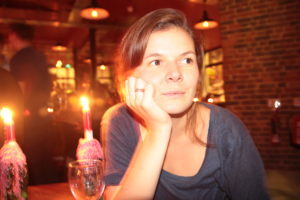 Many Becoming Who You Are readers and listeners are caring and compassionate people. But what happens when we live and work from a place of caring for others without addressing our own self-care? In this interview with Hannah Massarella, we talk about self-care for carers: how we can avoid burnout and overwhelm by cultivating a balance between caring for others and caring for ourselves.
Many Becoming Who You Are readers and listeners are caring and compassionate people. But what happens when we live and work from a place of caring for others without addressing our own self-care? In this interview with Hannah Massarella, we talk about self-care for carers: how we can avoid burnout and overwhelm by cultivating a balance between caring for others and caring for ourselves.
Hannah is the founder of Bird. She is a Certified Professional Co-Active Coach having trained with the Coaches Training Institute. Hannah‘s previous approach to her career in the non profit sector was to get her head down, work hard and push forward to be a catalyst for change. But her well-being and self-care took a back seat whilst she tried to make a positive impact and she ended up burning out. Hannah came across coaching in 2012 and assimilated a wide variety of tools and techniques to help her get back on purpose and heading in the right direction.
Hannah set up Bird to use the coaching tools and techniques she had learnt to support others who are committed to positive change. Bird works both nationally and internationally coaching and training NGO workers, doctors, nurses, PhD students, lecturers, teachers and entrepreneurs in self care and resilience, so they can continue with their work passionately and in a sustainable way.
Episode: Self-Care for Carers and World Changers with Hannah Massarella
Topics we cover include:
The roots of compassion fatigue, and why it’s so dangerous
The biggest mistakes we make when it comes to balancing our self-care with caring for other people
The four areas of self-care we need to address
The most effective tools we can use in our lives to avoid burnout
…and much more!
Useful Links
The Bird Retreat 2016
The Bird newsletter: weekly musings about burn out, resilience, stress management and confidence.
Hannah’s YouTube channel
Say Hello
Hannah
Facebook: facebook.com/HannahMassarellaCoActiveLifeCoaching
Twitter: @Hannahmazz
Instagram: @hannah_massarella
Hannah
Pinterest: pinterest.com/hannahbraime
Facebook: facebook.com/becomingwhoyouare
Website: becomingwhoyouare.net
Get a Free Audiobook from Audible
This podcast is brought to you by Audible.com. If you enjoy Becoming Who You Are, you can support the show by registering for a free 30-day trial using the link below. As part of your trial, you’ll get a free audiobook and can cancel any time.
Subscribe to the Podcast
Intro and outro: Stephanie Murphy
Image: Roman Kraft
The post #98: Self-Care for Carers with Hannah Massarella appeared first on Becoming Who You Are.










July 4, 2016
Real Talk Time: Feeling Envy Is OK (and This Is Why)
Envy is one of the “forbidden” emotions. We all experience feeling envy from time to time (I certainly do), but we’re unlikely to admit it—even to ourselves, let alone to other people. This is because envy isn’t an acceptable emotion in our culture. Admiration, celebration, gratitude: all of those things live in the light and are the feelings we’re more likely to discuss (they can also become an “envy bypass,” the safe experiences we turn to and name when it’s too uncomfortable to admit we feel envious).
But the reality is we can feel those things and also feel envious. We can be happy for someone’s engagement and still feel a pang of envy about the seemingly happy and stable relationship we long for ourselves. We can see someone get promoted, get published, win an award, and be happy for them, and still feel a longing for that kind of recognition and visibility ourselves. We can see someone’s holiday snaps on Facebook, enjoy the beauty of them, and still wish we had the opportunity for more peace in our hectic lives.
And that’s OK. As long as we respond appropriately. The uncomfortable piece that comes with feeling envy is another thought riding alongside those dual emotions “… and if I can’t have those things, I don’t want that person to have them either.” This is where feeling envy becomes no bueno, and what we’ll explore in this post.
Feeling envy is a neutral occurrence. It’s what you do next that makes or breaks the situation.
Before we get to that, if you’ve been telling yourself you shouldn’t feel envy because envy is bad, here’s the reality:
Envy is hard-wired. It’s an evolutionary mechanism for survival. When our ancestors saw a fellow caveman with an antelope they didn’t have, they felt envy. As a result, they either deferred to the other caveman as someone who possessed superior hunting skills, found a way to get rid of him and keep the antelope for themselves, or were spurred on to get an antelope of their own. Envy is part of the reason you and I are here today!
Like it or not, envy is an emotion and emotion drives action.
And this is where we need to be mindful.
Envy can absolutely be destructive as I mentioned. The dark side of envy is that thought: If I can’t have this, no one else should be able to either. Unchecked, it can lead us to want to tear people down, to try to take away what we think they have. It leads to nasty gossip behind someone’s back, it leads to doing things that try to keep the object of our envy small.
Envy can absolutely be a driving force for good too when we recognise and accept it for what it is and make the conscious decision to respond appropriately. Recognising we are feeling envious can lead to fruitful self-exploration: what is it this person has I want? (Hint: this is usually less about material goods and achievements and more about our needs and what those things represent to us). How do I imagine I’ll feel when I have it? Where am I denying myself this thing right now? In what ways am I keeping it out of my life? And how can I meet this need in the future?
Jill is listening to Bob talk about his glorious two weeks in the Bahamas and recognises a creeping sense of envy. As she pauses and asks herself the questions above, she realises the source of her envy isn’t Bob’s holiday to the Bahamas, but what she imagines is the experience behind it. She yearns for a greater sense of freedom in her life, and imagines Bob has the freedom allowing him to take such a trip without stressing about finances. As she explores it further, Jill also realises she envies the quality time she imagines Bob having with his significant other on his trip. She craves that kind of time with her partner, which is difficult with their hectic schedules. With these two core needs—freedom and connection—identified, Jill thinks about where she might keep these things out of her life, and where she has opportunities to allow herself to experience more of these things. She resolves to make time to explore all the different ways she could experience more freedom in her life, and to talk to her partner about spending more quality time together and planning something for them both to look forward to in the future.
This example shows envy isn’t the forbidden fruit we make it out to be. In fact it can be good—with the enormous caveat it’s good when we put that energy and drive to good use.
What’s not a good use? Writing nasty things about people online. Shaming someone for having more than we do. Downplaying people’s wins and successes because they feel threatening. Trying to undermine someone else because we perceive them to be more successful, smarter, more attractive, or more whatever than us. Good use includes (but isn’t limited to) identifying what’s provoking envy: the need, the desire, the longing. Is it for love? To be seen? To feel like we matter? To feel useful? To feel worthy of taking up space? And using that envy to renew our focus on our own patch of grass, on our own actions; looking at what’s missing and how we’re keeping it out.
The counter-intuitive thing about feeling envy is it’s nothing to do with the other person. It’s a reflection of our own feelings about ourselves and our lives.
If you’d like to explore the roots of your envy in more depth, here are a few writing prompts you can use:
1. When was the last time you remember feeling envy?
2. What was the situation? Write the facts, leaving your interpretation out for now.
3. What was the story you told yourself at the time?
4. Getting as specific as possible: what provoked the envy? This is usually not something tangible, but more of a core need (you can use this list to help).
5. What is impeding you meeting more of this need in your life?
6. How are you getting in the way of you meeting more of this need in your life?
7. What is one thing you can do differently going forward to meet more of this need in your life?
Have you ever had something positive come out of feeling envy? Leave a comment and share your thoughts.
Further reading: A discussion of the book ‘Envy’ by Helmut Schoek & tired of feeling creative envy? Read this.
The post Real Talk Time: Feeling Envy Is OK (and This Is Why) appeared first on Becoming Who You Are.









June 27, 2016
Where Is Your Locus of Control? (& 10 Lessons from the Happiness Advantage by Shawn Achor)
What is a locus of control and what does it have to do with happiness? Most of us believe that when we have more or become more, then we’ll be happy. In The Happiness Advantage, Shawn Achor argues this formula is the wrong way around: greater success doesn’t lead to happiness. Instead, greater happiness predisposes us to greater success.
In the book, he shares 7 principles that can help us train our mindset towards happiness. He also offers key insights from psychology that can help us retrain our minds for happiness and all the good stuff that comes with it.
One of these is our locus of control. Our locus of control describes how much control we think we have over what happens in our lives. People with an external locus of control believe their daily events are dictated by external forces whereas people with an internal locus of control believe their actions have a direct effect on their outcomes. This is similar to the victim mindset and creator mindset in The Drama Triangle.
Where is your locus of control?
When we have an external locus of control, we perceive ourselves to be at the mercy of external forces. We usually feel out of control and powerless to change the things happening in our lives. We feel that things happen to us, and this feeling of helplessness deeply affects our sense of wellbeing.
When we have an internal locus of control, on the other hand, we are a lot more open to recognising where we can change our actions to change our circumstances. We’re better at identifying where we actually have control, where we don’t, and focusing on the things we can change, rather than the things we can’t. As you’re probably guessing, when we have an internal locus of control, we can still feel in control and empowered to change things—even when the proverbial shihtzu hits the fan.
The important thing about the locus of control is that how much control we have in reality has little bearing on how we feel about our situation: it’s how much control we think we have, and how good we are at differentiating between the things we can control and the things we can’t.
As Shawn explains throughout the book, happiness isn’t just a mood or emotion (as we usually think of it), but it’s a work ethic. We can improve our levels of happiness with conscious attention and practice, and we can have the opposite effect by living unconsciously and neglecting our mental and emotional hygiene.
He also explains that, rather than focusing on pursuing lasting happiness, we should focus on how we feel day-to-day. This fits with the points above: we can’t control today how we will feel 10 years from now, but we have a lot more influence over our experience 10 minutes from now. Cultivating happiness isn’t about achieving some kind of nirvanic state, but about being consistent with our daily actions. Our external circumstances only predict about 10% of our total happiness—the rest is up to us.
How do you think your locus of control influences how you feel about things that happen in your life? Leave a comment and share your thoughts.
Further reading: how to complain effectively (and actually change something) & 6 ways to stop living someone else’s life
Get 10 Key Lessons from 'The Happiness Advantage' by Shawn Achor
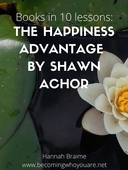
Enter your email to download 10 key lessons from The Happiness Advantage by Shawn Achor.
You'll also get access to all the other workbooks, video classes and MP3s in the Becoming Who You Are Library, plus weekly updates on living with greater courage, compassion and authenticity.
Success! Please check your inbox and click the link in the confirmation email to download your ebook.
There was an error submitting your subscription. Please try again.
First Name Email Address I'd like to receive the free email course. Download Powered by ConvertKit /* Layout */ .ck_form { /* divider image */ background: #fff url(data:image/gif;base64,R0lGODlhAQADAIABAMzMzP///yH/C1hNUCBEYXRhWE1QPD94cGFja2V0IGJlZ2luPSLvu78iIGlkPSJXNU0wTXBDZWhpSHpyZVN6TlRjemtjOWQiPz4gPHg6eG1wbWV0YSB4bWxuczp4PSJhZG9iZTpuczptZXRhLyIgeDp4bXB0az0iQWRvYmUgWE1QIENvcmUgNS41LWMwMTQgNzkuMTUxNDgxLCAyMDEzLzAzLzEzLTEyOjA5OjE1ICAgICAgICAiPiA8cmRmOlJERiB4bWxuczpyZGY9Imh0dHA6Ly93d3cudzMub3JnLzE5OTkvMDIvMjItcmRmLXN5bnRheC1ucyMiPiA8cmRmOkRlc2NyaXB0aW9uIHJkZjphYm91dD0iIiB4bWxuczp4bXA9Imh0dHA6Ly9ucy5hZG9iZS5jb20veGFwLzEuMC8iIHhtbG5zOnhtcE1NPSJodHRwOi8vbnMuYWRvYmUuY29tL3hhcC8xLjAvbW0vIiB4bWxuczpzdFJlZj0iaHR0cDovL25zLmFkb2JlLmNvbS94YXAvMS4wL3NUeXBlL1Jlc291cmNlUmVmIyIgeG1wOkNyZWF0b3JUb29sPSJBZG9iZSBQaG90b3Nob3AgQ0MgKE1hY2ludG9zaCkiIHhtcE1NOkluc3RhbmNlSUQ9InhtcC5paWQ6MUQ5NjM5RjgxQUVEMTFFNEJBQTdGNTQwMjc5MTZDOTciIHhtcE1NOkRvY3VtZW50SUQ9InhtcC5kaWQ6MUQ5NjM5RjkxQUVEMTFFNEJBQTdGNTQwMjc5MTZDOTciPiA8eG1wTU06RGVyaXZlZEZyb20gc3RSZWY6aW5zdGFuY2VJRD0ieG1wLmlpZDoxRDk2MzlGNjFBRUQxMUU0QkFBN0Y1NDAyNzkxNkM5NyIgc3RSZWY6ZG9jdW1lbnRJRD0ieG1wLmRpZDoxRDk2MzlGNzFBRUQxMUU0QkFBN0Y1NDAyNzkxNkM5NyIvPiA8L3JkZjpEZXNjcmlwdGlvbj4gPC9yZGY6UkRGPiA8L3g6eG1wbWV0YT4gPD94cGFja2V0IGVuZD0iciI/PgH//v38+/r5+Pf29fTz8vHw7+7t7Ovq6ejn5uXk4+Lh4N/e3dzb2tnY19bV1NPS0dDPzs3My8rJyMfGxcTDwsHAv769vLu6ubi3trW0s7KxsK+urayrqqmop6alpKOioaCfnp2cm5qZmJeWlZSTkpGQj46NjIuKiYiHhoWEg4KBgH9+fXx7enl4d3Z1dHNycXBvbm1sa2ppaGdmZWRjYmFgX15dXFtaWVhXVlVUU1JRUE9OTUxLSklIR0ZFRENCQUA/Pj08Ozo5ODc2NTQzMjEwLy4tLCsqKSgnJiUkIyIhIB8eHRwbGhkYFxYVFBMSERAPDg0MCwoJCAcGBQQDAgEAACH5BAEAAAEALAAAAAABAAMAAAICRFIAOw==) repeat-y center top; font-family: "Helvetica Neue", Helvetica, Arial, Verdana, sans-serif; line-height: 1.5em; overflow: hidden; color: #000000; font-size: 16px; border-top: solid 20px #3071b0; border-top-color: #9a349a; border-bottom: solid 10px #3d3d3d; border-bottom-color: #5c1f5c; -webkit-box-shadow: 0px 0px 5px rgba(0,0,0,.3); -moz-box-shadow: 0px 0px 5px rgba(0,0,0,.3); box-shadow: 0px 0px 5px rgba(0,0,0,.3); clear: both; margin: 20px 0px; } .ck_form, .ck_form * { -webkit-box-sizing: border-box; -moz-box-sizing: border-box; box-sizing: border-box; } #ck_subscribe_form { clear: both; } /* Element Queries — uses JS */ .ck_form_content, .ck_form_fields { width: 50%; float: left; padding: 5%; } .ck_form.ck_horizontal { } .ck_form_content { border-bottom: none; } .ck_form.ck_vertical { background: #fff; } .ck_vertical .ck_form_content, .ck_vertical .ck_form_fields { padding: 10%; width: 100%; float: none; } .ck_vertical .ck_form_content { border-bottom: 1px dotted #aaa; overflow: hidden; } /* Trigger the vertical layout with media queries as well */ @media all and (max-width: 499px) { .ck_form { background: #fff; } .ck_form_content, .ck_form_fields { padding: 10%; width: 100%; float: none; } .ck_form_content { border-bottom: 1px dotted #aaa; } } /* Content */ .ck_form_content h3 { margin: 0px 0px 15px; font-size: 24px; padding: 0px; } .ck_form_content p { font-size: 14px; } .ck_image { float: left; margin-right: 5px; } /* Form fields */ .ck_errorArea { display: none; } #ck_success_msg { padding: 10px 10px 0px; border: solid 1px #ddd; background: #eee; } .ck_label { font-size: 14px; font-weight: bold; } .ck_form input[type="text"], .ck_form input[type="email"] { font-size: 14px; padding: 10px 8px; width: 100%; border: 1px solid #d6d6d6; /* stroke */ -moz-border-radius: 4px; -webkit-border-radius: 4px; border-radius: 4px; /* border radius */ background-color: #f8f7f7; /* layer fill content */ margin-bottom: 5px; height: auto; } .ck_form input[type="text"]:focus, .ck_form input[type="email"]:focus { outline: none; border-color: #aaa; } .ck_checkbox { padding: 10px 0px 10px 20px; display: block; clear: both; } .ck_checkbox input.optIn { margin-left: -20px; margin-top: 0; } .ck_form .ck_opt_in_prompt { margin-left: 4px; } .ck_form .ck_opt_in_prompt p { display: inline; } .ck_form .ck_subscribe_button { width: 100%; color: #fff; margin: 10px 0px 0px; padding: 10px 0px; font-size: 18px; background: #9a349a; -moz-border-radius: 4px; -webkit-border-radius: 4px; border-radius: 4px; /* border radius */ cursor: pointer; border: none; text-shadow: none; } .ck_form .ck_guarantee { color: #626262; font-size: 12px; text-align: center; padding: 5px 0px; display: block; } .ck_form .ck_powered_by { display: block; color: #aaa; } .ck_form .ck_powered_by:hover { display: block; color: #444; } .ck_converted_content { display: none; padding: 5%; background: #fff; }The post Where Is Your Locus of Control? (& 10 Lessons from the Happiness Advantage by Shawn Achor) appeared first on Becoming Who You Are.









June 23, 2016
How Looking out Taught Me to Journey In
This is a guest post by Madeleine Forbes.
Two years ago I left the cities I’d called home – first London, then Cambridge – and moved into a little house made of earthbags, nestled in the side of a hill in Central Portugal.
For the first six months I didn’t even own a house key; there was no latch on our door. Who would find their way down the steep dirt track that led to our house? I found a new level of trust in the world. We washed in the river and drank from the well and I felt I had stepped onto another planet.
My world shrunk and expanded all at once.
Shrunk to a tiny circle of friends who spoke my language and knew my story, and a slightly larger circle of acquaintances whose language I tried to speak and who knew this part of my story.
Expanded to include the whole of the night sky, the vastness of the hills, the thousands of trees and the countless birds and insects and lizards inhabiting this landscape.
I escaped the rat race. I set myself free. And yet, one year in, I noticed something.
Having left one cage, slowly but surely I’d set about constructing another.
Diligently I carved the bars that would keep me in. If clients didn’t give me deadlines, I made them, ambitiously.
I made myself rules. I had to be at my desk before 8am. I could never say no to a task, even if it meant working on the weekend, othe evening, or on a day when something else was calling me. (Like swimming in the river or wandering under the trees in the old apple orchard or watching the swallows chase each other through the sky)
Slowly, little by little, familiar sensations arrived.
A tightening in my belly. A rushing in my head. A feeling that my face was lit more by the glow of the screen than the light of the moon. A breathlessness, a sense of rushing from day to day, chasing the peace that never came.
I created the worry and anxiety I’d worked so hard to escape.
On the last day of July 2015 I wrote this in my journal: “One of the things I struggle with is that I don’t work hard enough, don’t do enough.”
On the 23rd August, something had changed: “I’m ready to simplify. Seek stillness, freedom. Practise wellbeing and wholeness and breathing. I’m ready for things to be easy”.
One week later, I wrote a letter which changed my life.
***
This wasn’t the first time I’d met my demons. The worry, the perfectionism, and all the rest.
When outside forces seemed to be stacked against me, my meditation practice had taught me to see the feelings I was experiencing as passing weather systems, transient states that left my core unchanged.
What changed that summer was realising I didn’t want to look inwards any more. I’d moved to the hills to experience the wild, and I was ready to find out what it had to say.
I started talking to people about what nature meant to them – having conversations to find out what I could learn from the hills. And on the full moon at the end of August, as high summer tipped over, I wrote a letter that described what the land had told me.
It opened with this:
“Maybe, if you’re very lucky, you’ll see one hundred summers.
Compared to the number of books we’ll read, meals we’ll eat, songs we’ll hear, that number feels frighteningly small.
The seasons roll by so fast and it’s hard sometimes to pay attention to the natural world when our lives are so full, so busy.
It matters that we do.”
I sent the letter to seven people. But really, of course, I was writing to myself.
***
After that, I kept going. Month by month, I wrote, even as I went to a dark place when the temperature dropped and the nights lengthened.
In the first weeks of January, my business was quiet as a mouse. I was exhausted from a trip back to England, from endless wine-fuelled festive dinners and long lamp-lit nights. I watched what the land was doing, and I crawled into myself.
I held still. I drank tea. I wrote and read and mainly, I slept. Utterly unable to manifest anything approaching a vision for the year, I rested and rested, following the land, hearing what she whispered.
I was paying attention, now. Noticing the birds hanging still and quiet in the trees; the bare branches, the earth washed away when the river flooded. I didn’t berate myself for wanting to be still and quiet. For letting go.
I trusted that when spring came, green buds would burst out of the trees.
And they have.
The writing of the letters has become a practice that sustains me.
There is no right or wrong here. Only looking, smelling, listening, noticing: one thousand tiny breaths, being and not being, leaf and compost, root and branch.
***
If you know what it’s like to struggle with storms that leave you gasping, I share this practice with you and invite you to try it for yourself.
It doesn’t have to take long. An hour or so, every month.
Notice what is happening in the here and now of where you are.
Write it, photograph it. Notice how much is lost and gained, with every turn of the wheel. Ask yourself what the lesson for you is in that month (There is always one).
In turning outwards, we begin to draw new maps of our inner landscapes, and see how they too change and grow and wither and die, endlessly, part of the same circle.
We are as changeable as the wind and the trees, and that changeability is what makes us beautiful.
We swing from emptiness to abundance and back again, and every moment of that swing is perfect, and fragile.
Notice it, and savour it. It is yours, if you pay attention.
About Madeleine
 Madeleine is a writer and wanderer from London, now living in the hills of Portugal.
Madeleine is a writer and wanderer from London, now living in the hills of Portugal.
She shares her monthly reflections on the seasons at www.theseasonedyear.com , tweets at @mforbes_ and is on Facebook at https://www.facebook.com/mforbeswrites.
Image: Cecil Vedemil
The post How Looking out Taught Me to Journey In appeared first on Becoming Who You Are.









June 20, 2016
How to Master the ABCDs of Happiness
We often assume that the quality of our life and our level of happiness are influenced by what happens to us. Good things happen and we feel good. Bad things happen and we feel bad. In-between things happen and we feel in-between. It’s simple, right?
Well, no.
In reality, how we make sense of and process the events of our lives has far more impact than the events themselves. We view our lives through certain lenses, which have been shaped and coloured by our internal rules for life, previous experiences, and what we believe about ourselves. Often, we’re not even aware of what lenses we’re wearing or how they shape our perception of the world. We go through life thinking “This is truth, this is reality,” when what we’re calling truth and reality is a smattering of events mixed with a generous helping of guesses and assumptions. As I’ve written about before, the stories we tell ourselves matter. For the unhelpful stories, the best way to shift them is through noticing and questioning.
In The Happiness Advantage, Shawn Achor shares a useful framework we can use for this purpose: ABCD.
ABCD stands for Adversity, Belief, Consequence, and Disputation.
Adversity is something we can’t change. Whether we like it or not, it will happen at some point so let’s just accept that as part of being alive! :)
Belief, however, is something we can influence. Shawn points out we often use the phrase “bouncing back” in the context of recovering from adversity. In reality, however, adversity is an opportunity to “bounce forward,” to come out the other end a little older, a little wiser and with more self-knowledge around our strengths and self-trust in our resilience. We can shift our mindset around adversity and view it as a temporary circumstance and an opportunity for growth.
Shifts in our beliefs affect “C”, the Consequences of our beliefs. If we think we’re doomed, we will envisage very different consequences than if we’re aware of the growth opportunities within the challenges and adversity we face. This doesn’t mean we whitewash our emotional experiences or pretend everything is fine when it’s not. Instead, we can practice noticing what we tell ourselves about what’s happening to us and noticing how that influences our thoughts, feelings and responses. There are many ways we can do this, this question is one of my personal favourites.
That brings us to Disputation, which is a fancy way of saying “Just because you think it doesn’t mean it’s true.” This involves recognising that our belief is just a belief, not a fact, and that it’s open to examination and questioning. Try asking yourself what the evidence for that belief is, whether the evidence is airtight, and how you would respond if you heard a friend using this reasoning. Ask yourself: what are the alternative interpretations of this situation? How else could I respond? If I were to view this situation through a lens of self-kindness, what would that look like?
Your challenge: Try using this framework the next time you encounter a challenging situation or thought. What do you notice as you work through from A to D?
Further reading: Mastering happiness with Dr Joel Wade & struggling with confidence? These 5 truths might help
Get 10 Key Lessons from 'The Happiness Advantage' by Shawn Achor

Enter your email to download 10 key lessons from The Happiness Advantage by Shawn Achor.
You'll also get access to all the other workbooks, video classes and MP3s in the Becoming Who You Are Library, plus weekly updates on living with greater courage, compassion and authenticity.
Success! Please check your inbox and click the link in the confirmation email to download your ebook.
There was an error submitting your subscription. Please try again.
First Name Email Address I'd like to receive the free email course. Download Powered by ConvertKit /* Layout */ .ck_form { /* divider image */ background: #fff url(data:image/gif;base64,R0lGODlhAQADAIABAMzMzP///yH/C1hNUCBEYXRhWE1QPD94cGFja2V0IGJlZ2luPSLvu78iIGlkPSJXNU0wTXBDZWhpSHpyZVN6TlRjemtjOWQiPz4gPHg6eG1wbWV0YSB4bWxuczp4PSJhZG9iZTpuczptZXRhLyIgeDp4bXB0az0iQWRvYmUgWE1QIENvcmUgNS41LWMwMTQgNzkuMTUxNDgxLCAyMDEzLzAzLzEzLTEyOjA5OjE1ICAgICAgICAiPiA8cmRmOlJERiB4bWxuczpyZGY9Imh0dHA6Ly93d3cudzMub3JnLzE5OTkvMDIvMjItcmRmLXN5bnRheC1ucyMiPiA8cmRmOkRlc2NyaXB0aW9uIHJkZjphYm91dD0iIiB4bWxuczp4bXA9Imh0dHA6Ly9ucy5hZG9iZS5jb20veGFwLzEuMC8iIHhtbG5zOnhtcE1NPSJodHRwOi8vbnMuYWRvYmUuY29tL3hhcC8xLjAvbW0vIiB4bWxuczpzdFJlZj0iaHR0cDovL25zLmFkb2JlLmNvbS94YXAvMS4wL3NUeXBlL1Jlc291cmNlUmVmIyIgeG1wOkNyZWF0b3JUb29sPSJBZG9iZSBQaG90b3Nob3AgQ0MgKE1hY2ludG9zaCkiIHhtcE1NOkluc3RhbmNlSUQ9InhtcC5paWQ6MUQ5NjM5RjgxQUVEMTFFNEJBQTdGNTQwMjc5MTZDOTciIHhtcE1NOkRvY3VtZW50SUQ9InhtcC5kaWQ6MUQ5NjM5RjkxQUVEMTFFNEJBQTdGNTQwMjc5MTZDOTciPiA8eG1wTU06RGVyaXZlZEZyb20gc3RSZWY6aW5zdGFuY2VJRD0ieG1wLmlpZDoxRDk2MzlGNjFBRUQxMUU0QkFBN0Y1NDAyNzkxNkM5NyIgc3RSZWY6ZG9jdW1lbnRJRD0ieG1wLmRpZDoxRDk2MzlGNzFBRUQxMUU0QkFBN0Y1NDAyNzkxNkM5NyIvPiA8L3JkZjpEZXNjcmlwdGlvbj4gPC9yZGY6UkRGPiA8L3g6eG1wbWV0YT4gPD94cGFja2V0IGVuZD0iciI/PgH//v38+/r5+Pf29fTz8vHw7+7t7Ovq6ejn5uXk4+Lh4N/e3dzb2tnY19bV1NPS0dDPzs3My8rJyMfGxcTDwsHAv769vLu6ubi3trW0s7KxsK+urayrqqmop6alpKOioaCfnp2cm5qZmJeWlZSTkpGQj46NjIuKiYiHhoWEg4KBgH9+fXx7enl4d3Z1dHNycXBvbm1sa2ppaGdmZWRjYmFgX15dXFtaWVhXVlVUU1JRUE9OTUxLSklIR0ZFRENCQUA/Pj08Ozo5ODc2NTQzMjEwLy4tLCsqKSgnJiUkIyIhIB8eHRwbGhkYFxYVFBMSERAPDg0MCwoJCAcGBQQDAgEAACH5BAEAAAEALAAAAAABAAMAAAICRFIAOw==) repeat-y center top; font-family: "Helvetica Neue", Helvetica, Arial, Verdana, sans-serif; line-height: 1.5em; overflow: hidden; color: #000000; font-size: 16px; border-top: solid 20px #3071b0; border-top-color: #9a349a; border-bottom: solid 10px #3d3d3d; border-bottom-color: #5c1f5c; -webkit-box-shadow: 0px 0px 5px rgba(0,0,0,.3); -moz-box-shadow: 0px 0px 5px rgba(0,0,0,.3); box-shadow: 0px 0px 5px rgba(0,0,0,.3); clear: both; margin: 20px 0px; } .ck_form, .ck_form * { -webkit-box-sizing: border-box; -moz-box-sizing: border-box; box-sizing: border-box; } #ck_subscribe_form { clear: both; } /* Element Queries — uses JS */ .ck_form_content, .ck_form_fields { width: 50%; float: left; padding: 5%; } .ck_form.ck_horizontal { } .ck_form_content { border-bottom: none; } .ck_form.ck_vertical { background: #fff; } .ck_vertical .ck_form_content, .ck_vertical .ck_form_fields { padding: 10%; width: 100%; float: none; } .ck_vertical .ck_form_content { border-bottom: 1px dotted #aaa; overflow: hidden; } /* Trigger the vertical layout with media queries as well */ @media all and (max-width: 499px) { .ck_form { background: #fff; } .ck_form_content, .ck_form_fields { padding: 10%; width: 100%; float: none; } .ck_form_content { border-bottom: 1px dotted #aaa; } } /* Content */ .ck_form_content h3 { margin: 0px 0px 15px; font-size: 24px; padding: 0px; } .ck_form_content p { font-size: 14px; } .ck_image { float: left; margin-right: 5px; } /* Form fields */ .ck_errorArea { display: none; } #ck_success_msg { padding: 10px 10px 0px; border: solid 1px #ddd; background: #eee; } .ck_label { font-size: 14px; font-weight: bold; } .ck_form input[type="text"], .ck_form input[type="email"] { font-size: 14px; padding: 10px 8px; width: 100%; border: 1px solid #d6d6d6; /* stroke */ -moz-border-radius: 4px; -webkit-border-radius: 4px; border-radius: 4px; /* border radius */ background-color: #f8f7f7; /* layer fill content */ margin-bottom: 5px; height: auto; } .ck_form input[type="text"]:focus, .ck_form input[type="email"]:focus { outline: none; border-color: #aaa; } .ck_checkbox { padding: 10px 0px 10px 20px; display: block; clear: both; } .ck_checkbox input.optIn { margin-left: -20px; margin-top: 0; } .ck_form .ck_opt_in_prompt { margin-left: 4px; } .ck_form .ck_opt_in_prompt p { display: inline; } .ck_form .ck_subscribe_button { width: 100%; color: #fff; margin: 10px 0px 0px; padding: 10px 0px; font-size: 18px; background: #9a349a; -moz-border-radius: 4px; -webkit-border-radius: 4px; border-radius: 4px; /* border radius */ cursor: pointer; border: none; text-shadow: none; } .ck_form .ck_guarantee { color: #626262; font-size: 12px; text-align: center; padding: 5px 0px; display: block; } .ck_form .ck_powered_by { display: block; color: #aaa; } .ck_form .ck_powered_by:hover { display: block; color: #444; } .ck_converted_content { display: none; padding: 5%; background: #fff; }The post How to Master the ABCDs of Happiness appeared first on Becoming Who You Are.









June 17, 2016
#97: Cultivating Mindfulness, Creativity & Curiosity in Daily Life with Clare Barry
 Do you find it hard to stay engaged and creative in the face of digital distraction? If so, this interview is for you. Clare Barry shares her insights into cultivating mindfulness in our daily lives, as well as suggestions for how we can stay creative and curious in our daily lives.
Do you find it hard to stay engaged and creative in the face of digital distraction? If so, this interview is for you. Clare Barry shares her insights into cultivating mindfulness in our daily lives, as well as suggestions for how we can stay creative and curious in our daily lives.
Clare Barry is a London writer and the founder of Urban Curiosity events and workshops that help busy people slow down and spark ideas. She writes about creativity, curiosity and human connection in a digital world, and London in the real one.
Episode: Cultivating Mindfulness, Creativity & Curiosity in Daily Life with Clare Barry
Topics we cover include:
How to become more mindful about how we use our digital devices
The art of slowing down and making space for inspiration
The 3 principles Clare uses to stay mindful of her digital life
How we can manage social media, email, and other necessary features in a conscious and balanced way
Practical things we can all start doing in our daily lives to slow down and cultivate deeper mindfulness and creativity
…and much more!
Share the Wisdom
Sometimes those brief moments of boredom, are when something really wonderful can come about.
Click To Tweet
‘Inspirare’ in Latin means to breathe… Slow down long enough to take a breath.
Click To Tweet
Cultivating curiosity & making space for connection is what helps us thrive in this digital…
Click To Tweet
Useful Links
Clare’s Urban Curiosity Walkshops
Say Hello
Clare
Twitter: @ClareBarryUK
Instagram: @ClareBarryUK
Website: clarebarry.com
Hannah
Pinterest: pinterest.com/hannahbraime
Facebook: facebook.com/becomingwhoyouare
Website: becomingwhoyouare.net
Get a Free Audiobook from Audible
This podcast is brought to you by Audible.com. If you enjoy Becoming Who You Are, you can support the show by registering for a free 30-day trial using the link below. As part of your trial, you’ll get a free audiobook and can cancel any time.
Subscribe to the Podcast
Intro and outro: Stephanie Murphy
Image: Death to the Stock Photo
The post #97: Cultivating Mindfulness, Creativity & Curiosity in Daily Life with Clare Barry appeared first on Becoming Who You Are.















